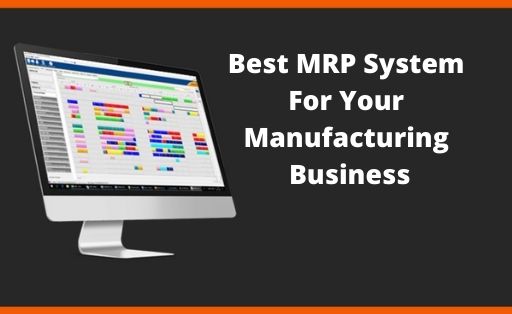Today is the era of instant gratification. Whether it’s the 30-minute pizza delivery or next-day delivery for clothes, customers are more active and impatient than ever before. To match up the high-speed expectations of modern customers, businesses need to step up their game and increase their efficiency levels to nothing less than 100%.
To sustain business operations in such a competitive market, the biggest tool that can transform processes and increase efficiency is digitalization. Software and computerized systems can automate processes and help manufacturers to fulfill the growing demands of their customers, in greater quantities without any compromise in quality.
MRP stands for Manufacturing Resource Planning, and it was first computerized in the early 1950s by aero-engine makers associated with Rolls Royce and General Electric. The implementation and consistent innovation of MRP systems created long-lasting effects and today it is a must-have tool for every manufacturing business.

How does MRP work?
An MRP software provides three primary objectives. First of all, it makes sure that raw materials are readily available for production and final goods are ready to be delivered to end customers. Secondly, it helps sustain the lowest necessary levels of raw materials and finished goods. And lastly, it helps organize manufacturing processes, delivery schedules, and purchasing activities.
This, however, is a very simplistic view of modern MRP software. There are many options available on the market that provide much more than that, including integrations with other various business tools.
How to choose the right MRP software?
The biggest challenge for manufacturing units is to implement the right MRP system that suits their specific business needs. The biggest misconception manufacturers have is that all MRP software out there is the same. Because of this, they put very little thought in researching and choosing the right system for their business. To make this task simpler, here are a few key points to consider when evaluating the right tool for your business.
Define your business problems
Start with identifying the problems your team faces throughout the various processes involved in your business operations. List them down and then prioritize according to your overall business goals. Now that you have a clear overview on your bottlenecks, you can start researching various MRP systems that could solve these problems. Evaluate features and narrow down to maximum five options
Define your budget
Some MRP systems are loaded with features that you might not even require. If you choose such a system, you will have to pay for all its functionality, regardless of your needs. This could be a costly mistake. Further, the cost evaluation must also take into consideration cloud-based tools versus on-premises solutions.
Cloud-based solutions usually offer regular free updates and improved functionality without any necessary resource from your side. They charge a monthly fee and offer support.
The cost of implementing and maintaining an on-premise solution is usually higher and it also implies significant resources for installing updates. They usually charge a one-time fee and extra fees for updates.
Define the level of device compatibility
In the modern-day scenario, where people are always on the move. You need a system that can be accessed on the go, and from multiple devices. Make sure you select a solution that offers maximum compatibility.
Final Thoughts
It is essential to have visibility and control over all moving parts of your manufacturing business, including inventory, sales, and reporting. With the help of such data, decision making becomes much more effective and you can focus on what matters most: growing your business. Choosing the right manufacturing system is essential, so make sure to keep the above three points in mind before you sign your next MRP deal.

